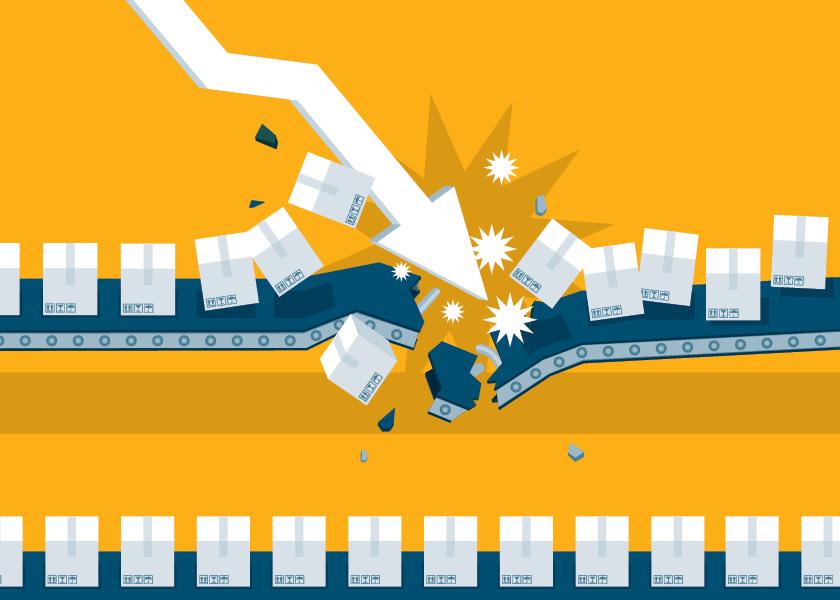The Global Agricultural Supply Chain: A New Battlefield

The war underway in Ukraine is yet another serial disruptor of the global economic system following more than two years of COVID-19, which is seemingly working its way into further variants and is far from over. The recent more-or-less shutdown of the port at Shanghai due to Chinese responses to control the latest outbreak reveal the heightened variability that just seems to be here to stay.
It is not easy to get a clear handle on how pork producers in the U.S. or any major pork producing country can mitigate against these disruptions. Maybe the best strategy of all is the one forced by sensible economic judgment – reduce production.
A Shrinking U.S. Swine Herd
The recent USDA Hogs and Pigs Report revealed that U.S. production has been reduced year over year, something that is not only rare in recent decades, but requires a major force to accomplish. The last of these were the recession of 2008 and porcine epidemic diarrhea virus (PEDV) disaster of 2014.
This is the right thing to do economically for most producers because costs are high and likely going higher. The risks associated with both inputs and export markets is very high. Current levels of production should return a profit, barring the closing of any slaughter capacity to add to some healthy margins which have been going on for at least a year, late fall not withstanding where a month or two of break-even occurred.
Hog production is also down in the European Union (EU), resulting in record increases in prices paid to producers in both Germany and Spain. Demand for pork is finally moving prices back up all the way through to the producer, which does not happen when slaughter plants are choked out with excess pig production. Brazil, on the other hand, has produced a record number of pigs in the last year and continues to exert strong influence as it follows a long-planned path to become a highly competitive pork exporter.
A Changing Landscape
Russia’s decision to move on Ukraine has brought to light how much change has occurred since tanks rolled into various European states at the beginning of World War II. Having superior hardware for war is now a necessary but completely insufficient condition for prevailing on the battlefield. The changes which have occurred since that time should give those in agriculture a heads-up on the sources of future disruptions to trade in food and the inputs needed to produce it.
First, all the enablers of global trade can be turned into weapons far stronger than tanks to persuade a country to either surrender or, for instance, halt hostilities.
It starts with the Internet. All modern warfare is highly dependent on the internet for both communication, but equally important, to know where every single troop and piece of equipment is in real time and the position of all enemy combatants. While militaries will set up a closed Intranet system for battle, it is not a perfect solution. Groups of governmental, as well as rogue hacking groups, can wreck the ability of a country to execute battle through jamming, virus introduction and denial of service.
Almost all global infrastructure is heavily organized electronically and ports, water supplies, gas and oil pipelines, nuclear and conventional power plants (to name a few) can all be disrupted through hacking and internal sabotage. As we depend more on trains, semis, aircraft and container ships that have no human on board, we increase efficiency as we dramatically increase vulnerability.
Most international monetary transactions require one of a small number of electronic pathway signatures such as a SWIFT number, which pathway can be denied to banks of hostile countries, essentially freezing assets and bringing down the ability to both transact sales or transfer monetary assets. Such strategies usually result in an attack on the value of a country’s currency, which if successful, is felt quickly by the entire population, raising the pressure on governments to end the chaos.
A Real Threat
The global agricultural supply chain is one of the most robust, resilient and redundant pathways for food, fiber and inputs ever imagined and the ingenuity of its operators to conquer problems through quick workarounds or alternative solutions is legendary. Still, the threat to such a system is real and will likely result in one of the most interesting and universal restructurings of global production, processing and delivery systems as it recreates itself to ensure its own future survival.
More from Farm Journal's PORK:
Dollar Power Continues to Decrease: What Does That Mean for Pig Farmers?
The Ukraine-Russian War: Rampant Inflation Puts Serious Squeeze on Disposable Income







